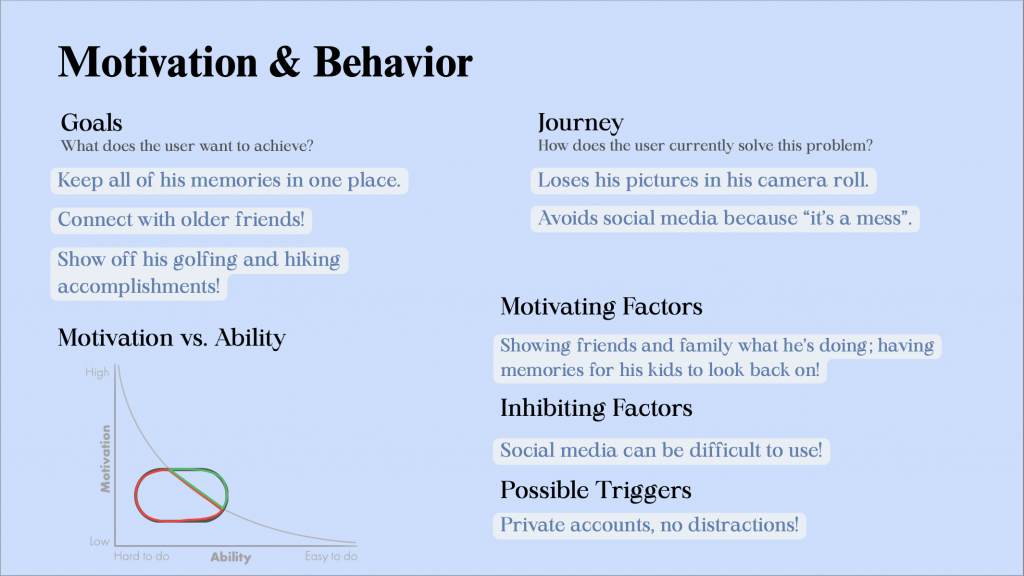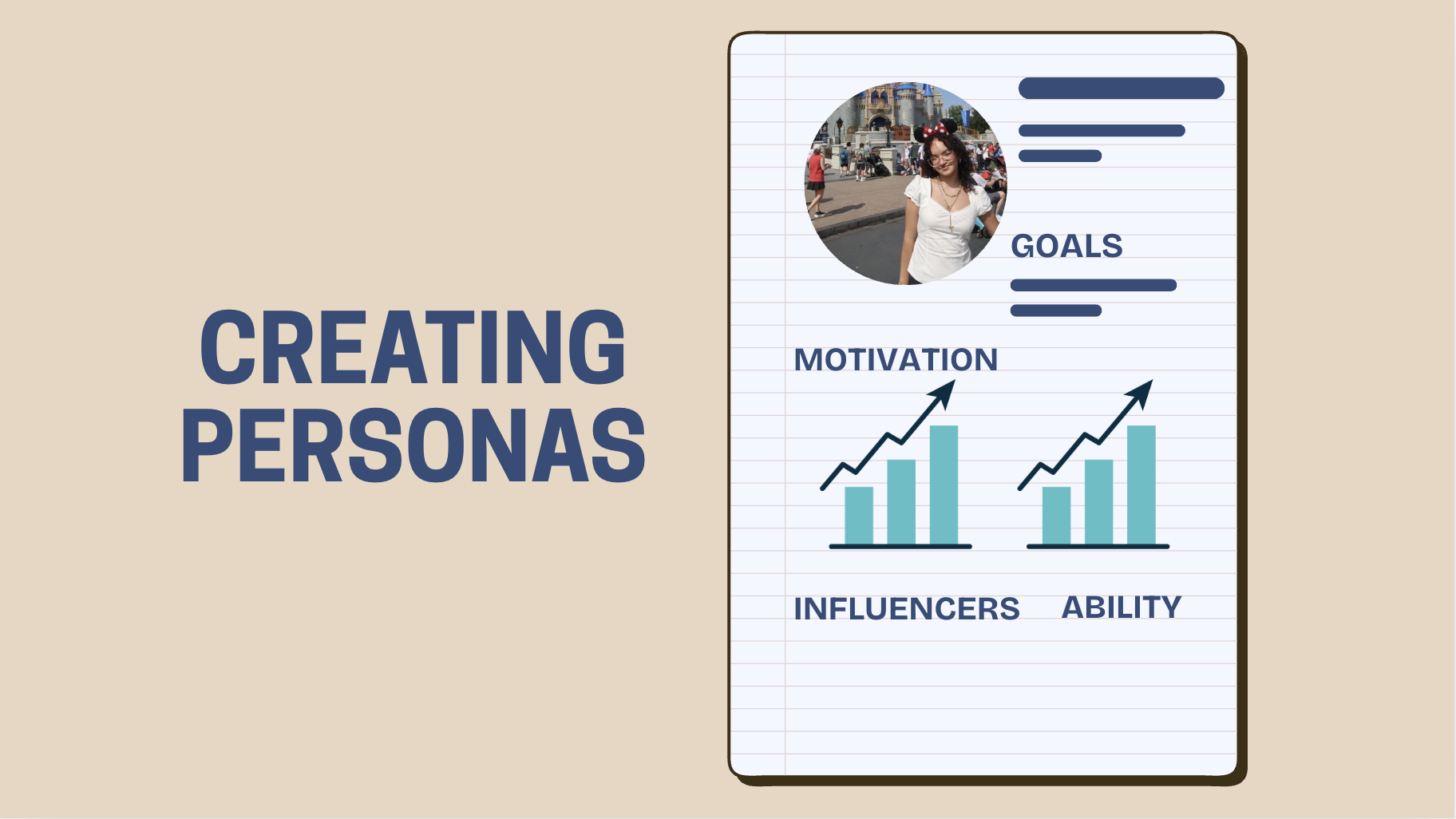When moving along the design thinking process, many designers turn to creating ‘personas’ to help better understand their potential users. Defined by the Interaction Design Foundation,
“Personas are fictional characters, which you create based upon your research to represent the different user types that might use your service, product, site, or brand in a similar way,”
“Creating personas will help you understand your users’ needs, experiences, behaviors and goals.”
To put it simpler, personas are compact, human-shaped maps of real user needs. They aren’t stereotypes — they are research-backed sketches that help teams make decisions with empathy, not guesswork.
I followed I followed the Persona Notepad method (the great guide is here) to build two real worksheets for Instagram: one of me and one of Jason Diaz, a 32-year-old dad who loves hiking and golf. Both of my filled worksheets will be attached at the bottom of this page.


Sooo… Why Bother?
A persona can easily turn vague ideas like “people want privacy” or “users enjoy posting” into specific problems we can solve. For example, my personal (Vanessa) persona, in a wrap, shows a 21-year-old grad student who loves photography but gets stuck deciding on an aesthetic and sometimes doom-scrolls instead of posting. That tells a product team very different things than Jason’s profile, which highlights privacy worries (his wife prefers fewer kid photos online), low tech confidence, and a desire to preserve family memories. Those differences can directly suggest product features: presets and scheduling for Vanessa; simple privacy controls, private-family albums, and better photo-backup tools for Jason.
Personas help in three concrete ways:
First, they prioritize features. If your primary persona wants curated aesthetics, then tools that surface filters, presets, or in-app grid previews should get priority. If another persona values privacy and control, then family-safe sharing flows and clearer account settings should make your roadmap!
Second, personas can guide UX language and tone: a tech-shy user needs plain language and big tap targets, while a frequent poster might welcome advanced editing tools.

Third, personas can reveal edge cases — things like “wife disagrees with posting kids” aren’t just moral notes; they become design constraints (e.g., friction before public sharing, consent prompts, or clearer audience selectors). In Jason’s case, these design constraints can likely save him an argument or two with his wife, and make his mother-in-law quite happy 🙂
When creating my personas, the guide I used also mentioned using context: when and where they’re using the app, what sparks them to log in, and what usually gets in their way. That’s why the Persona Notepad can be so helpful: it goes beyond surface-level traits and captures things like daily routines, emotional triggers, and pain points. For example, Jason might be scrolling in the evening after work, motivated by wanting to share family updates, but blocked by privacy concerns. I, on the other hand, might open Instagram during a study break, inspired by creativity, but get stuck choosing an aesthetic. When designers and developers have these details, they can quickly test features that respond directly to those needs — like trying out a one-tap “save to private family album” for Jason, or prototyping a “feed aesthetic assistant” for users like me who want help curating a look.
At the end of the day, personas are just a way to turn vague assumptions into real empathy. They’re not meant to replace user testing or data, but they do point you toward the right questions to ask. And honestly, when you’re working on something like Instagram — or any product people use every day — it’s easy to forget that every “user” is actually a real person with their own goals, frustrations, and motivations. Personas can be that little reminder to design with people first, which is what makes products actually connect and last.
I strongly urge you to try out this method when designing your own product or service, and let me know what you think!

Leave a Reply